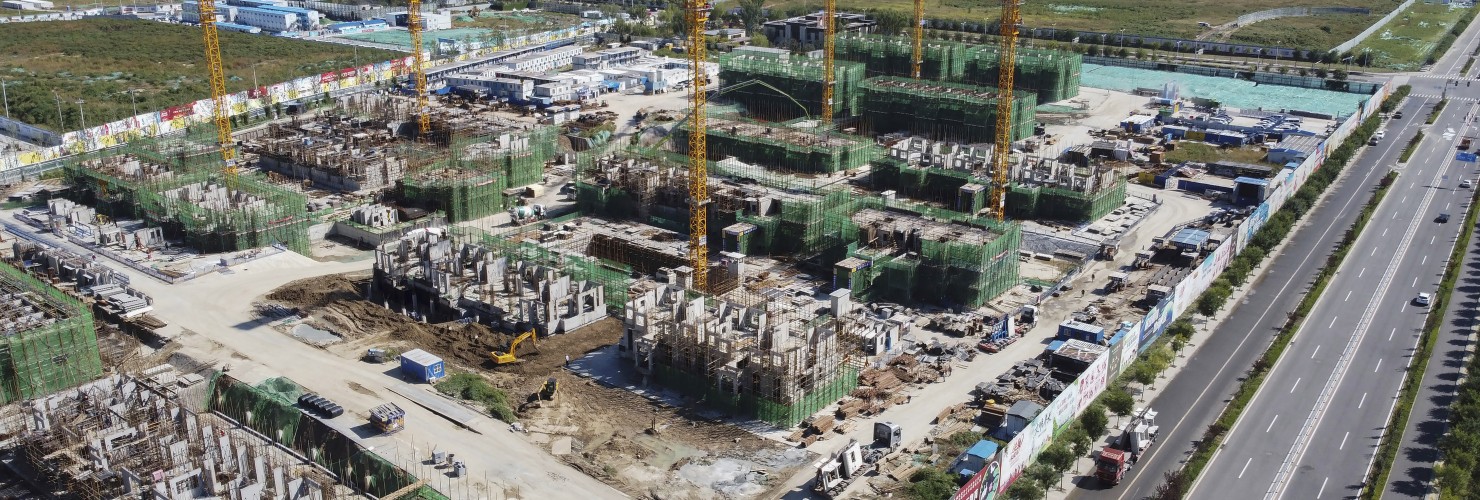

Policy blitz to curb risks stokes downward pressure on the economy over the third quarter of 2021
MERICS Economic Indicators Q3/2021
Following a spectacular recovery over the first half of 2021, China’s GDP growth rate dropped to 4.9 percent in the third quarter of the year. Overall growth across the first three quarters was 9.8 percent. More moderate growth was widely expected, but the sharper than expected slowdown across a broad range of key economic indicators is weighing down the GDP growth outlook for 2021. A combination of power shortages and Beijing’s efforts to control financial risk have hit economic growth. Meanwhile consumption keeps falling behind expectations, partly due to regional Covid-19 outbreaks, giving rise to economic imbalances. As the year ends, China is facing a broadening economic slowdown.
China’s government has navigated the economy through pandemic-related challenges effectively enough so far but risks over-reaching now. The policy blitz across various sectors of the economy that it launched in the second half of 2021 has raised questions about a lack of coordination within the government. Cracking down on unfavorable developments in the tech, education, and entertainment sectors while also enforcing anti-monopoly regulation, tackling financial risks and accelerating efforts to reach CO2 emission reduction goals would be challenging if tackled individually, even at the best of times. Doing them simultaneously in current circumstance may stall China’s economic engine.
Consumption cannot compensate for loss of steam in other parts of China’s economy
All of these measures are sure to decelerate GPD growth in the coming months: Deleveraging in the real estate sector will slow investment and construction activity, while manufacturing and exports will suffer from energy shortages in addition to high commodity prices and supply chain shortages. Weak consumption is hardly in shape to compensate for loss of steam in other parts of the economy.
In response, the government is likely to prioritize key policies; it must balance its strategic desire to address structural issues and yet preserve economic growth. Over the coming quarters, the government’s lower limit of acceptable GDP growth will be put to the test.
Defusing financial risk and a collapse in housing prices continues to be a headache
The key challenges will be addressing the biggest (gray) rhino in the room: China’s financial risks. The Evergrande fallout was long in the making, as the government tightened regulations for property developers over the past 18 months. Defusing financial risk while preventing a collapse in housing prices and trimming the economy’s reliance in real estate will continue to be a headache. Some policy tightening in other areas may be slackened, but the government seems committed to keeping controls in place for overleveraged property developers - it is ready to accept economic pain in order to ensure more sustainable economic growth, and rightly so.
More monetary and fiscal policy support can be expected over the next quarter to support GDP growth, especially in the run up of the Party Congress in 2022. However, the government is mindful of financial risk, so support is likely to be targeted, and aligned with the CCP’s long-term objectives, such as industri-al upgrading and boosting innovation. The recent regulatory clampdown has underlined the government’s limited trust in private enterprises and market mechanisms to deliver on these goals. The CCP’s “guidance” over the economy is likely to expand.
The MERICS China Confidence Index (MCCI) measures household and business confidence in future income and revenues. The index is weighted between household and business indicators. It includes the following indicators: stock market turnover, future income confidence, international air travel, new manufacturing orders, new business in the service sector, urban households’ house purchase plans, venture capital investments, private fixed asset investments and disposable income as a share of household consumption. All components have been tested for trends and seasonality. The MCCI was first developed in Q1 2017.
Only MERICS members have privileged access to this product. If you want to learn more about our membership model for institutions and businesses, please click here.
